Damascus – Nur al-Din al-Shahid Mosque دمشق – جامع نور الدين الشهيد
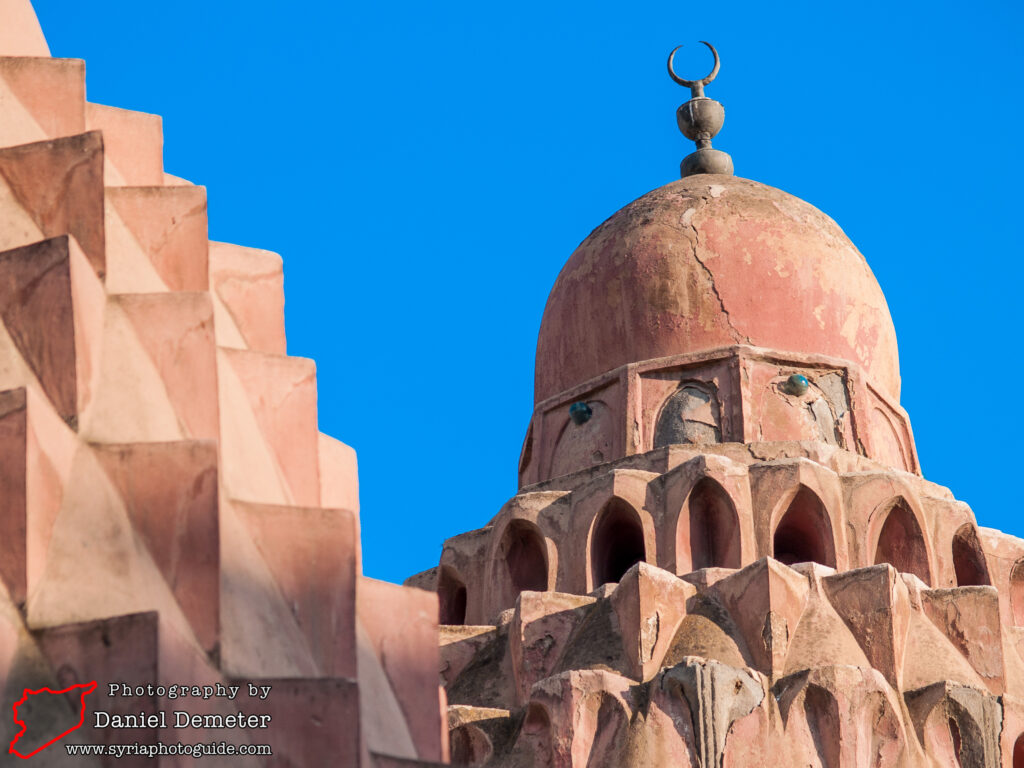
Hidden away in the markets of the old city of Damascus (دمشق) is Nur al-Din al-Shahid Mosque (جامع نور الدين الشهيد), the final resting place of Nur al-Din Mahmoud Zenki (نور الدين محمود زنكي). His father, Amad al-Din Zenki (عماد الدین زنكي), ruled over the regions of Aleppo (ﺣﻠﺐ), Hama (حماة), Mosul (الموصل), and Edessa (modern Şanlıurfa in Turkey) as part of the Seljuq Empire in the 12th century. After his father’s assassination in 1146, Nur al-Din (نور الدين) inherited the reigns of Aleppo (ﺣﻠﺐ), while his older brother ruled from Mosul (الموصل).
Nur al-Din (نور الدين) is known principally for his war against the Crusader presence in the region, and he attacked Crusader positions in Antioch (modern Antakya in Turkey) shortly after taking power in Aleppo (ﺣﻠﺐ). He soon formed alliances with other Muslim leaders in the region including Maein al-Din Anar (معين الدين أنر), then governor of Damascus (دمشق), in 1147. The forces of Nur al-Din (نور الدين) were called to aid in the defense of Damascus (دمشق) during a siege by the Second Crusade in 1148. After the defeat of Crusader forces there, Nur al-Din (نور الدين) waged a successful campaign against the Crusaders in the north of Syria, capturing territories overseen by the castle of Harem (حارم).
The territories of Mosul (الموصل) were ceded to Nur al-Din (نور الدين) after the 1149 death of his older brother. Nur al-Din (نور الدين) sought to incorporate Damascus (دمشق) into his realm, and the governors of the city shifted their alliance back towards the Crusaders. After two unsuccessful sieges on the city in 1150 and 1151, Nur al-Din (نور الدين) eventually emerged victorious as the population of Damascus (دمشق) aided him in taking the city in 1154. This expanded his territory to include almost the whole of Syria. Nur al-Din (نور الدين) refrained from moving on Jerusalem (القُدس), however, instead consolidating power in the territories he controlled.
It wasn’t until 1157 that Nur al-Din (نور الدين) resumed his offensive, besieging the Knights Hospitaller in Banias (بانياس) in the Syrian coast. Nur al-Din (نور الدين) made an alliance with Byzantine forces after Manuel I Comnenus took control of Antioch in 1159, much to the dismay of the Crusaders. The forces of Nur al-Din (نور الدين) would later capture Raynald of Châtillon, Prince of Antioch, who would remain imprisoned for sixteen years. Nur al-Din (نور الدين) made a pilgrimage to Mecca in 1162 once it appeared that the Crusader threat against him had subsided. The Crusaders turned their attention to Egypt, a territory that Nur al-Din (نور الدين) was himself interested in, after the death of King Baldwin III of Jerusalem.
Concerned about this new Crusader offensive in Egypt, Nur al-Din (نور الدين) waged a campaign against Crusader positions along the Syrian coast, forcing them to invest more resources into defending their existing territory. Power struggles over Egypt continued for several years, with shifting alliances between governors of Egypt with the Crusaders and Nur al-Din (نور الدين). The forces of Nur al-Din (نور الدين), under general Assad al-Din Shirkuh Bin Shadhi (أسد الدين شيركوه بن شاذي), took full control over Egypt in 1169. Assad al-Din Shirkuh Bin Shadhi (أسد الدين شيركوه بن شاذي) died two months later, and his nephew, Salah al-Din Yousef Bin Ayoub (صلاح الدين يوسف بن أيوب), took power there.
Nur al-Din (نور الدين) soon realized that Salah al-Din (صلاح الدين) was in fact a dangerous opponent, and both sides mobilized armies for what seemed to be an inevitable war against each other. This was averted in 1174, when Nur al-Din (نور الدين) passed away in the Damascus Citadel (قلعة دمشق). He was initially buried there, his body later moved to Nur al-Din al-Shahid Mosque (جامع نور الدين الشهيد), also known as al-Madrasa al-Nuriyeh (المدرسة النورية). Aside from his political and military achievements, Nur al-Din (نور الدين) is remembered for overseeing the construction of numerous mosques, hospitals, educational institutions and caravanserais. He would hold court several times per week to listen to the concerns of his subjects, and is remembered as a modest and pious leader who emphasized justice.
The building which contains his tomb, built between 1167 and 1172, is fairly modest and nondescript. It was the first madrasa and mausoleum complex in Islam, an architectural combination that would see widespread popularity in Syria and Egypt. The tomb chamber is covered by a honeycombed dome, an impressive example of this device that originated in Mesopotamia. It was the final monument in Damascus (دمشق) to utilize this design. The tomb chamber, which can be viewed through a grille in the market if the building is closed, includes a mihrab framed by two porphyry columns with acanthus capitals, possibly Byzantine in origin. The northern section of the complex was demolished in the 1950s, and while the southern prayer hall remains intact, what remains of the courtyard fails to leave much of an impression.
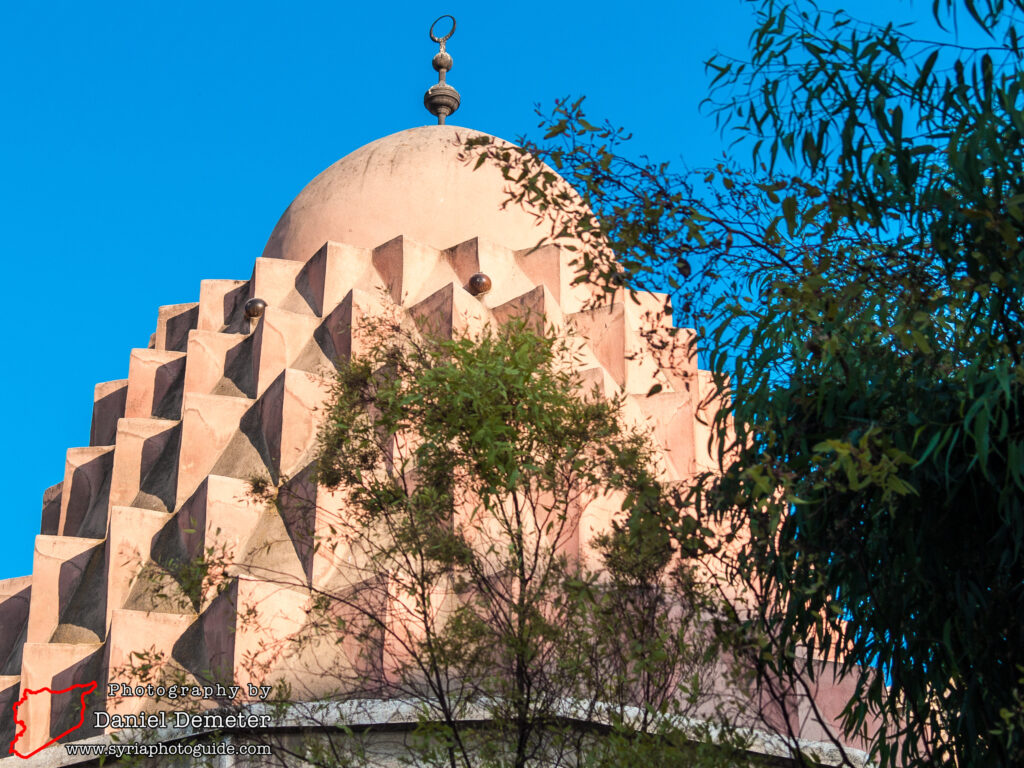
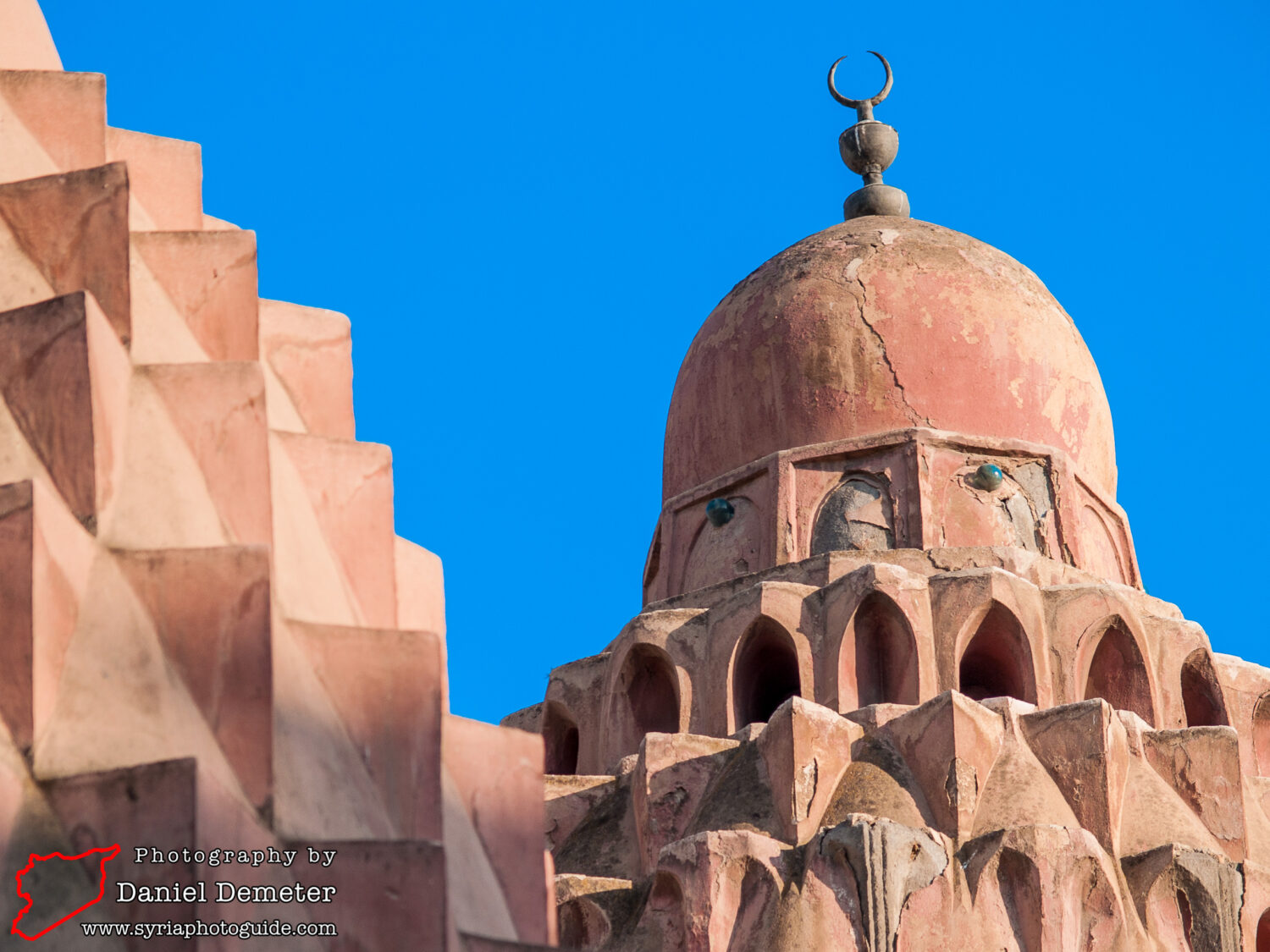
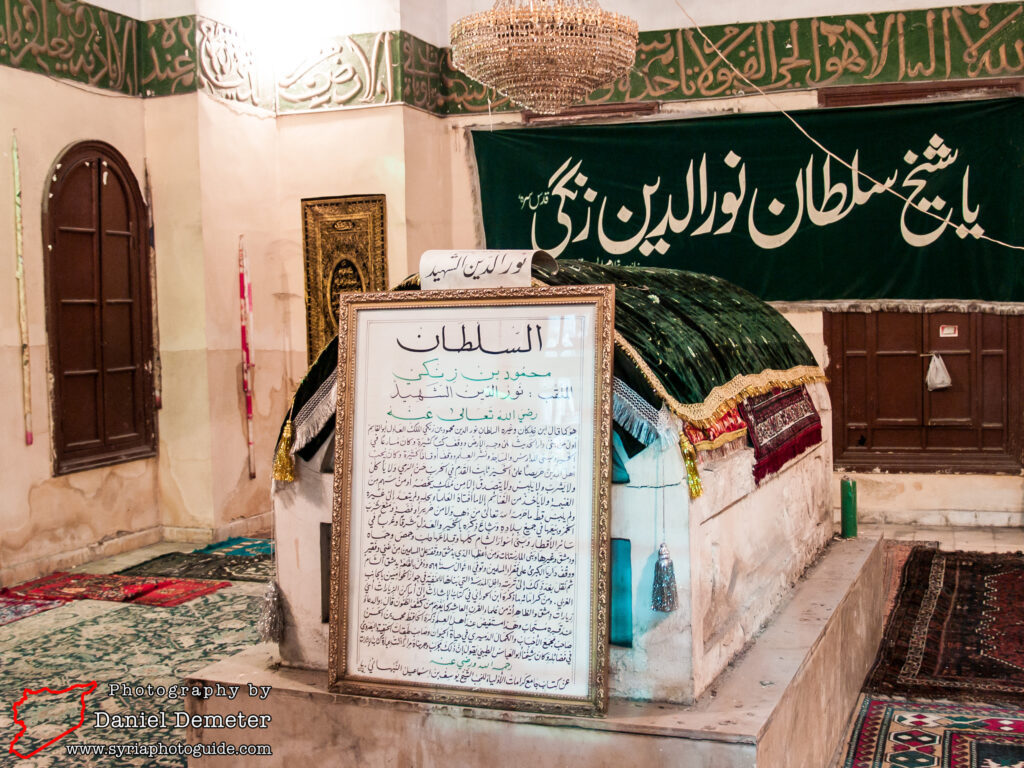
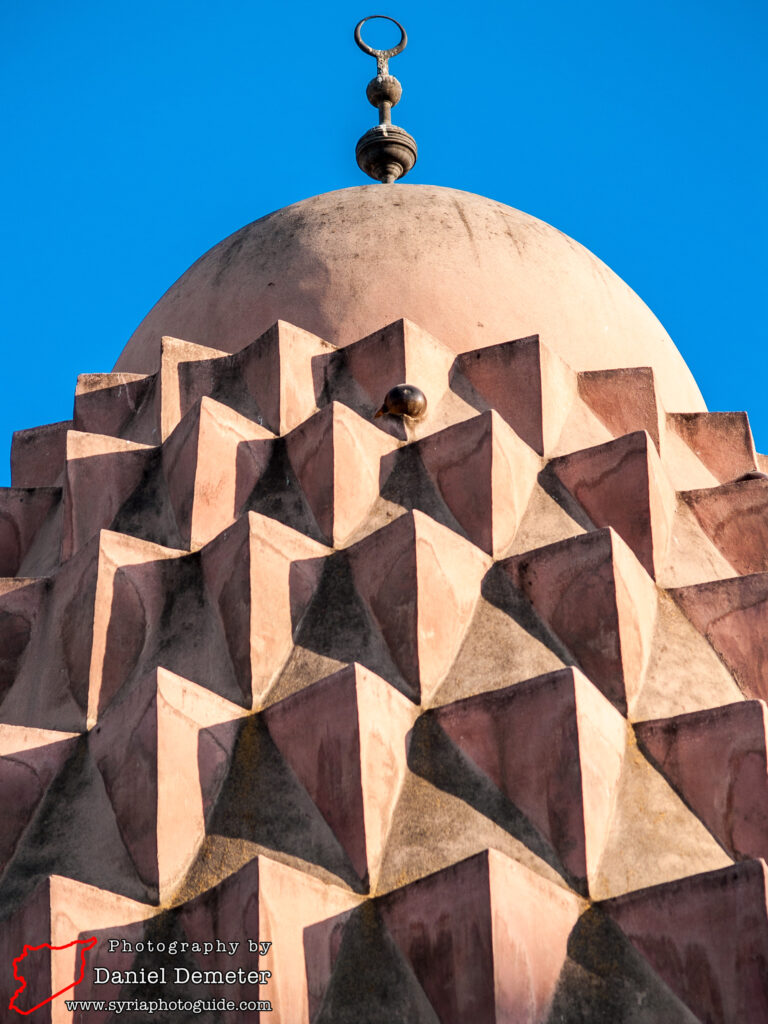
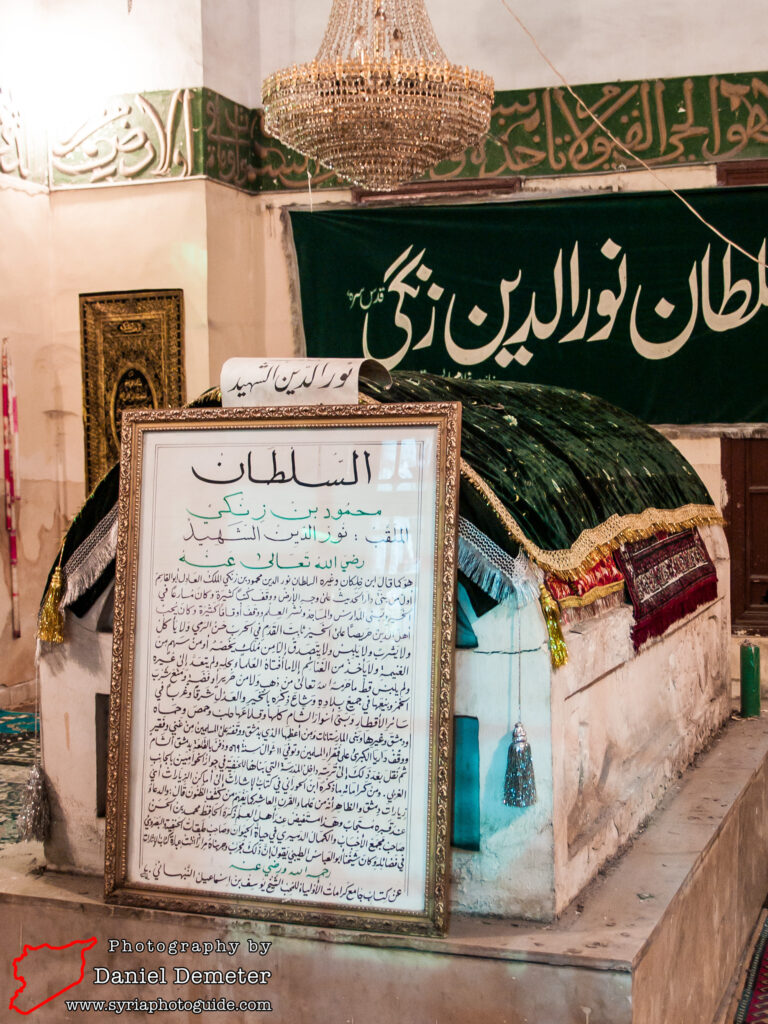
Getting There: Nur al-Din al-Shahid Mosque (جامع نور الدين الشهيد) is located in the old city of Damascus (دمشق), approximately one hundred and fifty meters west of Qasr al-Azem (قصر العظم) and about the same distance south of the Roman temple remains at the eastern end of Souq al-Hamidiyeh (سوق الحميدية).
Coordinates: 33°30’36.00″N / 36°18’18.00″E
Transliteration Variants: Nour al-Din al-Shahid Mosque
Rating: 3 / 10
